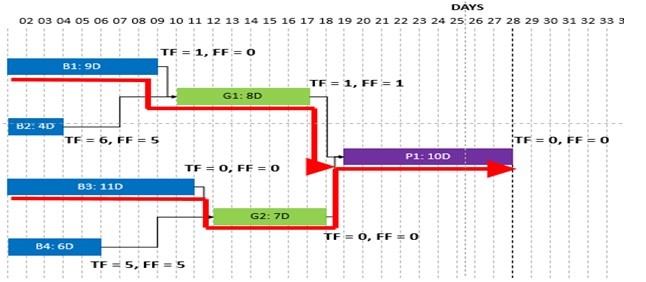How much damage can resource shortages do to projects really?

We all know unitary method. If 10 resources can do 10 jobs in 10 days and if 5 turns up, we expect the same 10 jobs to take 20 days. The impact is known and predictable. So why should we worry about facing shortages in project situations? We should always be able to predict the impact and take recovery actions.
The reason why Walker and Kelley highlighted this as a major problem, in their seminal paper on the Critical Path method, is because the above does not hold true when it comes to projects.
What do we do when we face resource shortages in projects? The answer is a no-brainer – we look at all the available work and prioritize and postpone some. Some prioritize based on critical (in terms of time) over non-critical, some look at best cash flow opportunities, some consider the risks involved etc.
What may not be apparent is that each choice has a different impact on the rest of the project. If we cannot predict the choices that individuals are going to make, it is not possible to make reliable predictions about the fate of the project. And, prioritization choices are made by every stake-holder (internal or external), again and again, over the entire life cycle of the project.
If the above holds true, do you think reliable predictability is ever possible in projects facing resource shortages?
To test this, consider a simple example of 7 tasks and 3 different resource types, as shown in the picture:
Each task color represents a different type of resource.
If we have to execute the project in the planned duration of 28 days, it is obvious that we need 4 Blue resources, 2 Green resources and 1 Purple resource.
(The Total Float and Free Float values are displayed in the picture)
Imagine that during execution we are able to mobilize only 2 Blue, 1 Green and 1 Purple resource
i. How much time will it take by the Critical Path logic (Float sorting, ascending)?
ii. How many possible ways are there to execute?
iii. What is the best time in which the project can be executed?
iv. Is there any known logic by which we can arrive at the answer of (iii)?
v. What is the range of possible answers (Maximum delay/ Minimum delay)?
.png?width=642&height=150&name=Logo%20(1).png)
